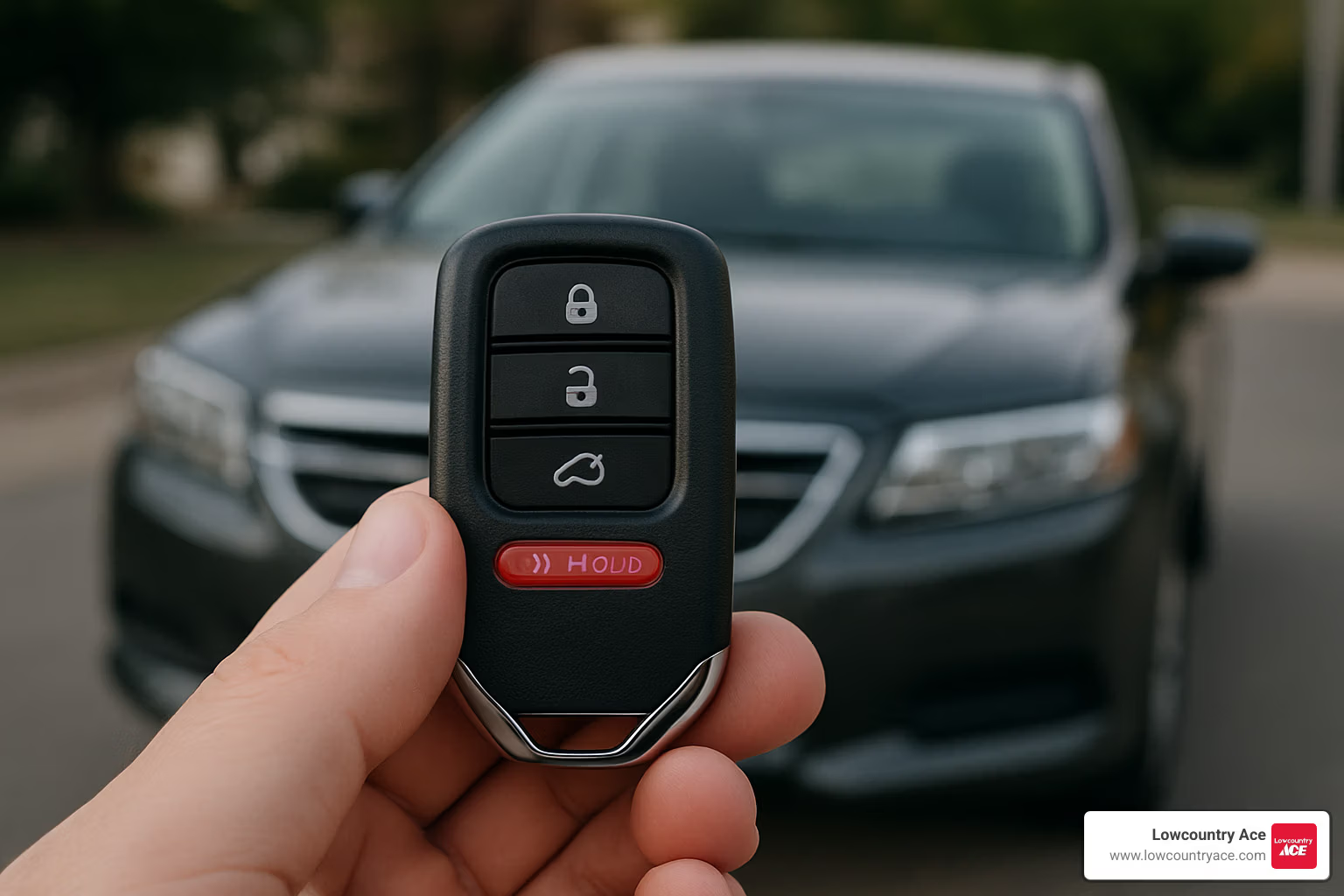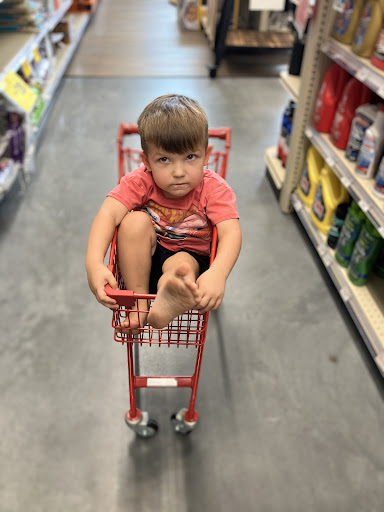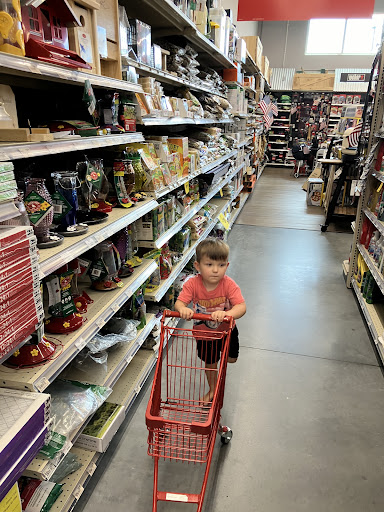Key Fob Replacement and Programming: 7 Powerful Solutions 2025
Why Key Fob Replacement and Programming Matters for Your Daily Life
Key fob replacement and programming is essential when your remote stops working, gets lost, or you need a spare for peace of mind. Here’s what you need to know:
Quick Solutions:
– Dead battery – Replace the battery first (90% of issues are solved this way)
– Lost fob – Get a replacement and program it to your vehicle
– Damaged fob – Replace the housing or get a new remote entirely
– Need spare – Program additional fobs for family members or emergencies
Programming Options:
1. DIY – Use your owner’s manual for self-programming ($25-$100)
2. Hardware store – Professional programming at up to 50% savings vs dealers
3. Locksmith – Mobile service with specialized tools ($80-$200)
4. Dealership – Most expensive but guaranteed compatibility ($150-$400)
Modern vehicles rely heavily on these small electronic devices for security and convenience, making key fob replacement and programming knowledge crucial for every car owner.
The helpful team at Lowcountry Ace understands that getting locked out of your car or dealing with a non-responsive remote can be frustrating. We’ve streamlined our key programming services to get you back on the road quickly and affordably.
Easy key fob replacement and programming glossary:
– car key copy
– car key fob copy
– key fob duplication service
What Exactly Is a Key Fob & the Many Types of Car Keys
Think of your key fob as a tiny computer that talks to your car using invisible radio waves. This small device sends encrypted signals on specific frequencies (usually 315 MHz or 433 MHz) to tell your vehicle “hey, it’s really me!” Each fob has its own unique digital fingerprint that your car recognizes.
The world of car keys has evolved from simple metal keys to sophisticated RFID technology and transponder chips that keep your vehicle safe while making your life more convenient. Understanding these different types helps you make smart choices when you need key fob replacement and programming services.
Modern keys use everything from smart key technology to laser-cut precision, with features like remote-start capability. The helpful team at Lowcountry Ace sees all these different types regularly.
Traditional Mechanical Keys vs Electronic Fobs
The classic steel blade key is beautifully simple – just a piece of metal cut to match your car’s lock cylinders. These keys have no chip technology and work purely through physical interaction with the mechanical tumblers inside your locks. You’ll still find them on older vehicles and as backup options on newer cars, where they operate manual locks without any electronic assistance.
Electronic fobs are like having a remote control for your car right in your pocket. They can open doors, sound panic alarms, pop your trunk, and even start your engine from across the parking lot. The trade-off? They need batteries and sometimes require programming when things go wrong.
Transponder & Remote Keys
Transponder keys brought serious security to the automotive world. Hidden inside the plastic head of your key is a tiny microchip that must send the correct code to your car’s immobilizer system before the engine will start.
The really clever part is the rolling code technology. Every time you use your key, the signal changes automatically, making it nearly impossible for car thieves to intercept and copy your code. Your panic button is usually part of this system too.
Remote keys combine the best of both worlds – a physical key blade for backup situations and wireless remote functions for everyday convenience. Most include lock, open up, and panic buttons, with some adding trunk release or remote start capabilities.
Smart & Proximity Keys
Smart keys and proximity keys represent the luxury end of automotive access technology. These systems use passive entry – just having the fob in your pocket lets you open up doors by touching the handle and start the engine with push-button start convenience.
These advanced systems communicate through your vehicle’s CAN bus network, which is basically your car’s internal internet. They can remember your seat position, mirror settings, and climate preferences for different drivers.
The downside? Their complexity means key fob replacement and programming typically requires professional equipment and expertise. But when they work properly, they make every trip feel a little more luxurious.
Key Fob Replacement and Programming Essentials
The first thing to understand is the difference between key fob replacement and programming. Programming means teaching your vehicle’s computer to recognize a new or existing remote, while replacement involves getting an entirely new key fob. Here’s something that might surprise you: 90% of “broken” key fobs just need a fresh battery!
When your vehicle enters programming mode, it’s essentially opening a digital door for new fob signals. This happens through onboard programming sequences using specific ignition cycles and button presses, or it might require professional diagnostic equipment like OBD2 scanners. The tricky part? Timing windows are absolutely critical – most vehicles give you just 10 to 30 seconds to complete each programming step.
The helpful team at Lowcountry Ace has the professional equipment and expertise to handle programming when DIY methods don’t work. For comprehensive information about our automotive key services, check out Ace Hardware Program Keys. We follow industry standards set by organizations like the Associated Locksmiths of America to ensure proper security protocols.
When to Replace vs Just Reprogram
Your key fob is telling you a story – you just need to know how to read the signs. Weak signal strength is a dead giveaway for replacement needs. If you used to open up your car from 30 feet away but now have to practically touch the door handle, your fob’s internal components are likely failing.
Physical damage makes the decision obvious. A cracked housing that exposes the circuit board, water damage from that unfortunate washing machine incident, or buttons that stick or don’t respond all point toward replacement.
But here’s where the battery 90% rule comes in handy. If your fob stopped working suddenly, the buttons feel normal, and there’s no visible damage, reprogramming after a battery change often solves the problem.
DIY Key Fob Replacement and Programming
Many car owners successfully program their own remotes using their owner’s manual instructions. The process typically involves precise sequences of ignition cycling, door operations, and button presses within exact timing windows.
Most DIY programming requires at least one working key, access to your vehicle’s interior, and the patience to follow detailed timing sequences. You’ll often cycle the ignition from OFF to RUN multiple times within a specific timeframe – usually around 10 seconds – to enter programming mode.
Here’s a pro tip: keep a stopwatch handy during the process. More programming attempts fail due to timing issues than any other reason. Having a spare working key is also crucial since many vehicles require an existing programmed remote to add new ones to the system.
Step-by-Step Universal Programming Guide
While specific steps vary by manufacturer, most vehicles follow a similar pattern. Start with preparation by gathering all existing fobs and your new remote, ensuring fresh batteries in every device.
To enter programming mode, insert your key and cycle the ignition OFF to RUN eight times within 10 seconds. This sequence works for many Ford, Toyota, Nissan, and Chrysler vehicles. Watch for confirmation signals like door locks cycling or dashboard lights flashing.
Next, program each fob individually by pressing and holding the lock button for about 5 seconds. You should hear or see confirmation through door lock cycling. When you’re finished, exit programming mode by turning the ignition OFF or opening the driver’s door.
Here’s something important: most vehicles erase all previously programmed fobs when entering programming mode. This means you must reprogram all remotes together, not just the new one. Finally, test every function on each fob to ensure proper programming.
Make-Specific Nuances (Ford vs Toyota)
Ford vehicles often require a specific door-lock dance combined with ignition cycling. For newer Ford models with push-button start, you’ll need to locate the backup key slot (usually hidden in the center console) and follow a precise sequence of button presses.
Toyota programming varies dramatically by model year, and timing precision becomes even more critical. A Toyota Sienna can store up to four remotes and uses a unique sequence involving door cycling, ignition timing, and button-press durations that must be exact.
Some Toyota models require a dual-button press technique where you hold both lock and open up buttons simultaneously before pressing just the lock button.
Professional Services for Key Fob Replacement and Programming
Professional programming services use specialized diagnostic equipment that communicates directly with your vehicle’s computer systems. Licensed locksmiths carry advanced tools that can read existing fob codes, clear lost or stolen fob data, and program new remotes even when you’ve lost all your keys.
Hardware store programming services provide dealership-quality results at significantly lower costs. At Lowcountry Ace, we use professional-grade equipment and typically complete key fob replacement and programming in minutes rather than the hours a dealership might require.
For detailed information about our automotive key services, visit Ace Hardware Car Keys Made to see how we can help get you back on the road quickly and affordably.
Troubleshooting, Costs & Security
When your key fob replacement and programming efforts hit a snag, don’t panic. Most issues have straightforward solutions once you understand what’s going wrong. Signal interference from nearby electronics can disrupt the delicate communication between your fob and vehicle.
Re-sync errors often happen after battery replacement, leaving your fob “talking” but your car not “listening.” If your vehicle’s immobilizer light stays on after attempted programming, it’s telling you the system isn’t recognizing the new fob’s digital handshake.
When fobs go missing or get stolen, time is critical for your security. Most vehicles can only remember a limited number of fobs – typically between 2 and 8 – and the programming process often wipes the memory clean of all previous fobs.
For comprehensive guidance on automotive security features, Ford’s Keys and Locks How-To Articles provides manufacturer-specific troubleshooting steps that apply to many vehicle brands.
Cost Breakdown & Where to Go
Let’s talk dollars and sense when it comes to key fob replacement and programming. Dealership services typically run $150-$400 including the fob and labor. You’re paying premium prices for guaranteed compatibility and warranty coverage.
Locksmith services fall in the $80-$200 range and offer something dealerships can’t – they come to you. Many experienced locksmiths can program fobs that dealerships claim are “impossible” to replace, especially for older or discontinued vehicle models.
DIY programming costs only $25-$100 for the replacement fob itself, assuming you can successfully steer the programming process yourself. This approach requires patience, precise timing, and accepting the risk that you might need professional backup.
The helpful team at Lowcountry Ace offers that sweet spot – professional programming at 50-60% savings compared to dealerships. You get knowledgeable local service without the premium pricing, plus the convenience of picking up other supplies while you’re there.
Always check your vehicle warranty before paying out of pocket. Some manufacturers cover key fob issues under extended warranties, especially if the failure seems related to a manufacturing defect.
Troubleshooting Failed Programming Attempts
When programming attempts fail, start with the most common culprit – battery power. Even batteries that seem to work fine might lack the juice needed for the programming handshake.
Part number matching is crucial but often overlooked. Your 2018 Honda Civic fob might not work with your neighbor’s 2019 model, even though they look identical. Double-check that you’re using the exact part number specified for your vehicle.
RF interference can turn a simple programming session into a frustrating ordeal. Move away from buildings with strong Wi-Fi signals, cell towers, or electronic devices. Even your smartphone sitting nearby can interfere with some programming sequences.
If your first attempt fails, wait at least one minute before trying again. Many vehicles have built-in lockout periods that prevent immediate retry attempts.
Timing is everything in key fob programming. Going too fast or too slow can prevent successful entry into programming mode. Use a stopwatch and follow the exact timing requirements.
Lost or Stolen Fob? Immediate Security Actions
A lost or stolen fob creates an immediate security risk that needs swift action. Your first call should be to a professional service to erase the lost fob from your vehicle’s memory. Most vehicles can’t selectively forget just one fob – the entire system typically needs resetting.
Rekey your locks if house keys were attached to the lost fob. This might seem like overkill, but it’s better than wondering if someone has access to both your home and garage.
Check your insurance coverage – some policies cover key replacement costs, especially when theft is involved rather than simple misplacement. Document any suspected theft with local police, as you’ll need the report number for insurance claims.
Valet mode on many modern vehicles can limit access to certain functions even with a working fob. This feature provides an extra security layer when you must leave keys with service personnel.
The helpful team at Lowcountry Ace understands that security concerns don’t wait for convenient business hours. We work quickly to reprogram your remaining fobs and get your vehicle’s security system back to full protection.
Environmental & Spare-Key Benefits
When most people think about key fob replacement and programming, environmental impact probably isn’t the first thing that comes to mind. But millions of electronic key fobs end up in landfills every year, adding to our growing e-waste problem. The good news? You can make a difference while saving money at the same time.
Remanufactured key fobs offer an eco-friendly alternative that doesn’t compromise on quality or reliability. These refurbished remotes use original equipment manufacturer (OEM) circuitry from previously used fobs, giving them a second life with brand-new cases and button pads.
The helpful team at Lowcountry Ace understands that Charleston families want solutions that make sense both financially and environmentally. That’s why we offer remanufactured options alongside traditional replacements.
Eco-Friendly Options & Remanufactured Fobs
Choosing remanufactured key fobs is like buying a certified pre-owned car – you get OEM quality without the environmental cost of manufacturing brand-new components. These fobs go through rigorous testing both before and after refurbishment, ensuring they meet the same specifications as the original remote.
The refurbishment process involves technicians carefully disassembling used fobs, testing each circuit component, replacing worn parts like buttons and cases, and reassembling everything to factory standards. The result? A remote that works just like new but costs significantly less and keeps electronic waste out of landfills.
Unlike cheap aftermarket copies that might work for a few months before failing, remanufactured fobs use the same internal components your vehicle manufacturer originally specified. This means perfect compatibility with your car’s security system.
By choosing remanufactured options, you’re supporting what’s called a circular economy – where products get multiple lives instead of being thrown away after single use.
Why You Should Always Have a Spare
Having a spare key fob isn’t just convenient – it’s one of those simple preparations that can save you from major headaches down the road. When was the last time you had a dead phone battery at the worst possible moment? The same thing happens with key fobs, usually when you’re running late for an important appointment.
Road trips become much more relaxing when you know there’s a backup fob tucked safely in your wallet or travel bag. No more worrying about dropping your only remote in a rest stop parking lot or having the battery die in the middle of nowhere.
Family logistics get easier too. Teen drivers can have their own programmed fob instead of constantly borrowing yours. Parents can keep spare fobs at work or in secure locations at home.
The emergency backup scenarios are where spare fobs really prove their worth. Dead batteries, lost keys, or malfunctioning remotes won’t leave you stranded when you’ve planned ahead. Many Charleston families tell us their spare fob has saved them at least once.
For comprehensive information about all our key services in the Charleston area, check out our More info about Key Replacement Service page. We’re here to help you stay prepared and mobile, whether you need key fob replacement and programming for your daily driver or want to set up backup options for the whole family.
Frequently Asked Questions about Key Fob Replacement and Programming
Getting your key fob replacement and programming questions answered can save you time, money, and frustration. The helpful team at Lowcountry Ace hears these questions daily from Charleston-area customers, and we’re happy to share what we’ve learned from years of helping folks get back on the road.
How many key fobs can my vehicle store?
Your vehicle’s computer system can typically handle between 2-8 key fobs, depending on what you drive. Most basic cars and trucks accommodate 2-4 remotes, while luxury vehicles often support 6-8 fobs to handle multiple family members and spare keys.
Here’s something interesting – that 2010 Toyota Sienna we mentioned earlier? It maxes out at exactly four remotes when you use the onboard programming method. Try to add a fifth one, and the system just ignores you completely. No error message, no warning beep – it simply won’t accept another fob.
The storage limit is hardwired into your vehicle’s computer and can’t be changed or upgraded. When you hit that limit, you’ll need to decide which fobs stay and which ones get erased from memory during the next programming session.
Will adding a new fob disable my alarm or existing remotes?
This is probably our most common concern from customers, and here’s the good news: adding a new fob won’t mess with your alarm system if you follow the programming steps correctly. Your vehicle’s security features stay intact throughout the process.
However, there’s an important catch that surprises many people. Most vehicles automatically erase all previously programmed fobs when you enter programming mode. This means you can’t just add one new remote – you have to reprogram every fob you want to keep working.
Think of it as your car’s security system doing a complete reset. While this extra step might seem annoying, it’s actually protecting you by automatically disabling any lost or stolen fobs that might still be floating around out there.
Can I program a used or aftermarket fob myself?
Absolutely, but success depends on getting the right match for your specific vehicle. Used fobs work great as long as they’re compatible with your car’s make, model, and year. The tricky part is making sure the frequency matches – some vehicles use 315 MHz while others need 433 MHz signals.
Aftermarket fobs are hit-or-miss in our experience. The good ones work just like factory remotes and can last for years. The cheap ones might work initially but fail within months, or they might have limited functions like missing panic buttons or trunk release features.
DIY programming success really comes down to having patience and following timing requirements precisely. Most customers who fail at self-programming simply moved too fast or too slow through the sequence. If your first attempt doesn’t work, professional services have specialized diagnostic equipment that can often succeed where DIY methods fall short.
The FCC ID number on your existing fob is your best friend when shopping for replacements. Match that number exactly, and you’ll have much better luck with both compatibility and programming success.
Conclusion
Key fob replacement and programming doesn’t have to turn into a headache or drain your wallet. Most key fob issues are simpler to solve than people think – and you have more options than you might realize.
Whether you’re dealing with a dead battery (remember, that fixes 90% of problems!), need a spare for peace of mind, or are facing a completely non-responsive remote, there’s a solution that fits your situation. You might choose the DIY route with your owner’s manual, visit us for professional programming at hardware store prices, or head to a dealership for guaranteed compatibility.
Here in Charleston, James Island, and Folly Beach, we know how important it is to stay mobile. When your key fob stops working, it’s not just inconvenient – it can throw off your entire day.
That’s exactly why the helpful team at Lowcountry Ace has invested in professional-grade programming equipment. We can handle everything from basic remote programming to complex smart key systems, often while you browse our aisles for other essentials. No appointment needed, no waiting weeks for dealer availability.
The smartest move? Get that spare key fob before you actually need it. Don’t wait until you’re standing in a parking lot with a dead remote, frantically pressing buttons that won’t respond. Plan ahead, and you’ll thank yourself later.
Stop by our Riverland Market location on Folly Road whenever it’s convenient for you. We’re here to keep Charleston families moving smoothly, one key fob replacement and programming service at a time.
For immediate help or to learn more about what we can do for your vehicle, check out More info about Key Fob Replacement Services. Your peace of mind is worth the visit.
Lowcountry Ace Hardware: Your one-stop shop for home improvement. We offer quality products from trusted brands and expert advice from our experienced staff. Located on James Island, visit us for tools, hardware, fishing gear, power tools, building materials, grills & smokers, electrical and plumbing supplies, and more.

















